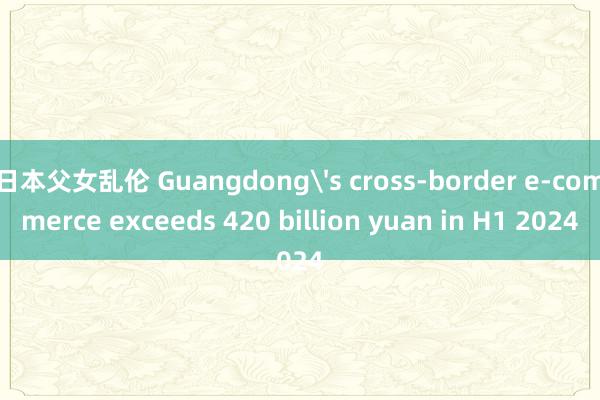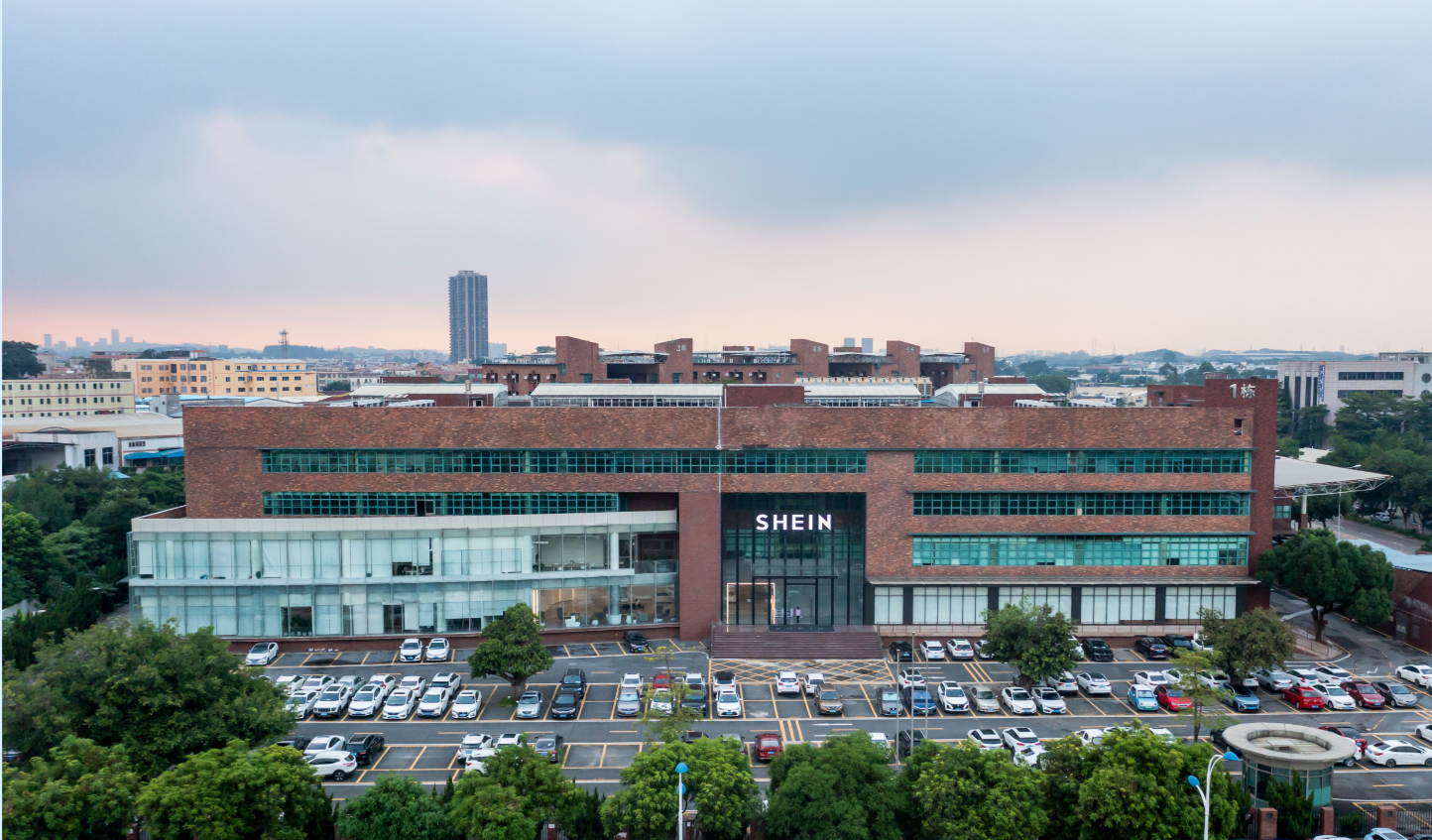
On July 25th, a media briefing on Guangdong's cross-border e-commerce was held in Guangzhou. The event highlighted that Guangdong's cross-border e-commerce trade soared from 11.3 billion yuan in 2015 to 843.3 billion yuan in 2023, with an average annual growth rate of 71.4%. This sector now accounts for over 10% of the province's total foreign trade and more than one-third of the national cross-border e-commerce trade. In the first half of 2024, Guangdong's cross-border e-commerce trade reached 427.34 billion yuan日本父女乱伦, significantly supporting the province's overall foreign trade.
Why has Guangdong achieved such remarkable success in cross-border e-commerce?
First, Guangdong leads the development of a policy support system.
In recent years, the Department of Commerce of Guangdong Province has led the development of a comprehensive policy support system for cross-border e-commerce, with initiatives such as 10 policies for high-quality development of cross-border e-commerce, 8 policies for high-quality development of B2B, 11 policies for high-quality development of overseas warehouses, and 12 policies for the continuous and stable development of cross-border e-commerce. These all-encompassing measures have propelled the growth of the sector.
Second, Guangdong strengthens the construction of comprehensive pilot zones.
Guangdong has successfully achieved province-wide coverage of comprehensive pilot zones for cross-border e-commerce. It supports Guangzhou and Shenzhen in becoming international hubs for cross-border e-commerce and promotes Jieyang and Shantou in eastern Guangdong as new growth centers. Guangzhou, Shenzhen, and Foshan each have cross-border e-commerce trade exceeding 100 billion yuan annually, while Dongguan, Zhuhai, Huizhou, and Shantou each have trade volumes reaching 10 billion yuan.
Third, Guangdong empowers the "cross-border e-commerce + industrial belt" development model
In terms of fostering leading cross-border e-commerce enterprises, companies like SHEIN, representing billion-yuan-level enterprises, are driving the digital transformation and upgrading of nearly 5,000 clothing manufacturing enterprises. Over ten listed cross-border e-commerce companies, such as Sailvan Times and SFC Electronics, focus on niche sectors like apparel and consumer electronics, pushing for brand globalization.
In terms of e-commerce investment attraction, Guangdong targets global leading e-commerce platforms, with 23 leading platforms including Alibaba, JD.com, Douyin, Amazon, Shopee, and Lazada establishing regional headquarters in the province.
To strengthen international cooperation, Guangdong leverages e-commerce to promote industrial globalization, organizing industrial belt enterprises to visit Indonesia, Singapore, Malaysia, and other countries to collaborate with local e-commerce platforms and explore the Southeast Asian market.
In terms of promoting industrial integration, Guangdong has held four "Cross-Border E-Commerce + Industrial Belt" matchmaking events in cities like Shenzhen, Shantou, Zhongshan, and Yangjiang, facilitating nearly 1,000 industrial belt enterprises in connecting with seven major cross-border e-commerce platforms, including SHEIN and Amazon, and nearly 100 service providers. This initiative drives industrial globalization and secures overseas orders. In 2023, the province exported various light industrial products worth 290 billion yuan through cross-border e-commerce, an 11% year-on-year increase.
To date, Guangdong has six international mail exchange bureaus and 17 international express supervision centers. The province handles over half of the nation's international and Hong Kong-Macau-Taiwan express business, processing more than 120,000 international parcels per hour.
Guangdong is accelerating the global deployment of overseas warehouses, cultivating 30 provincial-level public overseas warehouses. As of now, Guangdong has built a total of nearly 6 million square meters of various overseas warehouses worldwide.
幼女如厕Source :Lingnan on the Cloud
本年上半年,广东跨境电商收支口超4200亿元!
7月25日,广东跨境电商专题媒体通气会在广州举行。广东跨境电商收支口从2015年的113亿元跃升至2023年的8433亿元,年均增速高达71.4%,占全省外贸总量超10%,占寰球跨境电商收支口比重跳跃1/3。2024年上半年,全省跨境电商收支口达4273.4亿元,有劲支撑外贸大盘。
广东为何不详在跨境电商方面获取这么的收货?
一是广东牵头构建跨境电商策略支撑体系。
跨境电商高质料发展10条、B2B高质料发展8条、国际仓高质料发展11条、跨境电商不绝踏实发展12条……频年来,广东省商务厅牵头构建跨境电商策略支撑体系,以全标的做事举措推动跨境电商发展。
二是强化跨境电商详尽西宾区诱导。
广东奏效已矣跨境电商综试区全省全袒护,支撑广州、深圳诱导跨境电商国际缺点城市,粤东揭阳、汕头等打造跨境电商新增长极。广州、深圳、佛山3市年跨境电商收支口超千亿,东莞、珠海、惠州、汕头4市范畴达百亿。
三是赋能鼓吹“跨境电商+产业带”发展风物。
在莳植跨境电商链主企业方面,以希音为代表的千亿级跨境电商企业,带动近5000家服装制造企业数字化转型升级。赛维期间、三态电子等10余家跨境电商上市企业,聚焦衣饰、破钞电子等细分界限,鼓吹品牌出海。
在电商招商引资方面,对准全球龙头电商平台蛊惑,阿里、京东、抖音、亚马逊、虾皮、来赞达等23家龙头平台均在粤设赶紧区总部。
为加强国际和谐,依托电商带动产业出海,广东组织产业带企业赴印尼、新加坡、马来西亚等地,与当地电商平台对接和谐,开拓东南亚市集。
在促进产业对接方面,广东在深圳、汕头、中山、阳江等地市举办4场“跨境电商+产业带”对接行径,为近1000家产业带企业,对接SHEIN、亚马逊等7大跨境电商平台和近100家做事商资源,依托电商带动产业出海,抢握国际订单。2023年全省通过跨境电商出口各样轻工成品2900亿元,同比增长11%。
截止当今,广东建成国际邮件互换局6个、国际快件监管中心17个,广东国际及港澳台快递业务量占寰球一半以上,每小时措置国际包裹超12万个。
加速国际仓全球布局,莳植省级大家国际仓30个。截止当今,广东省累计在全球诱导各样国际仓总面积近600万平淡米。
文 | 记者 孙绮曼
译 | 赵凡日本父女乱伦








